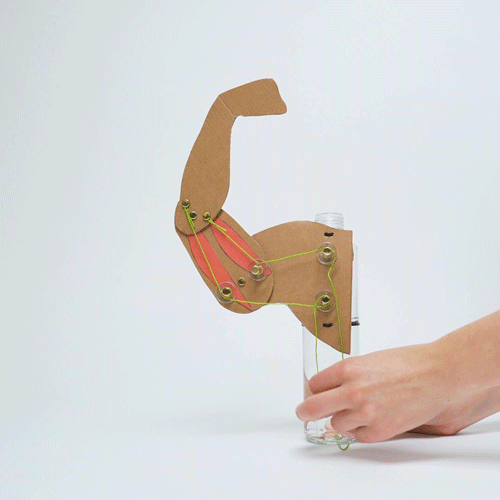Step-by-step tutorial
Step 1
Gather your materials!

Step 2
Print the printable. Then, cut out the pieces.

Step 3
Set the bicep and tricep pieces aside. Trace the rest of the pieces onto the cardboard and use the pushpin to mark where the holes are.
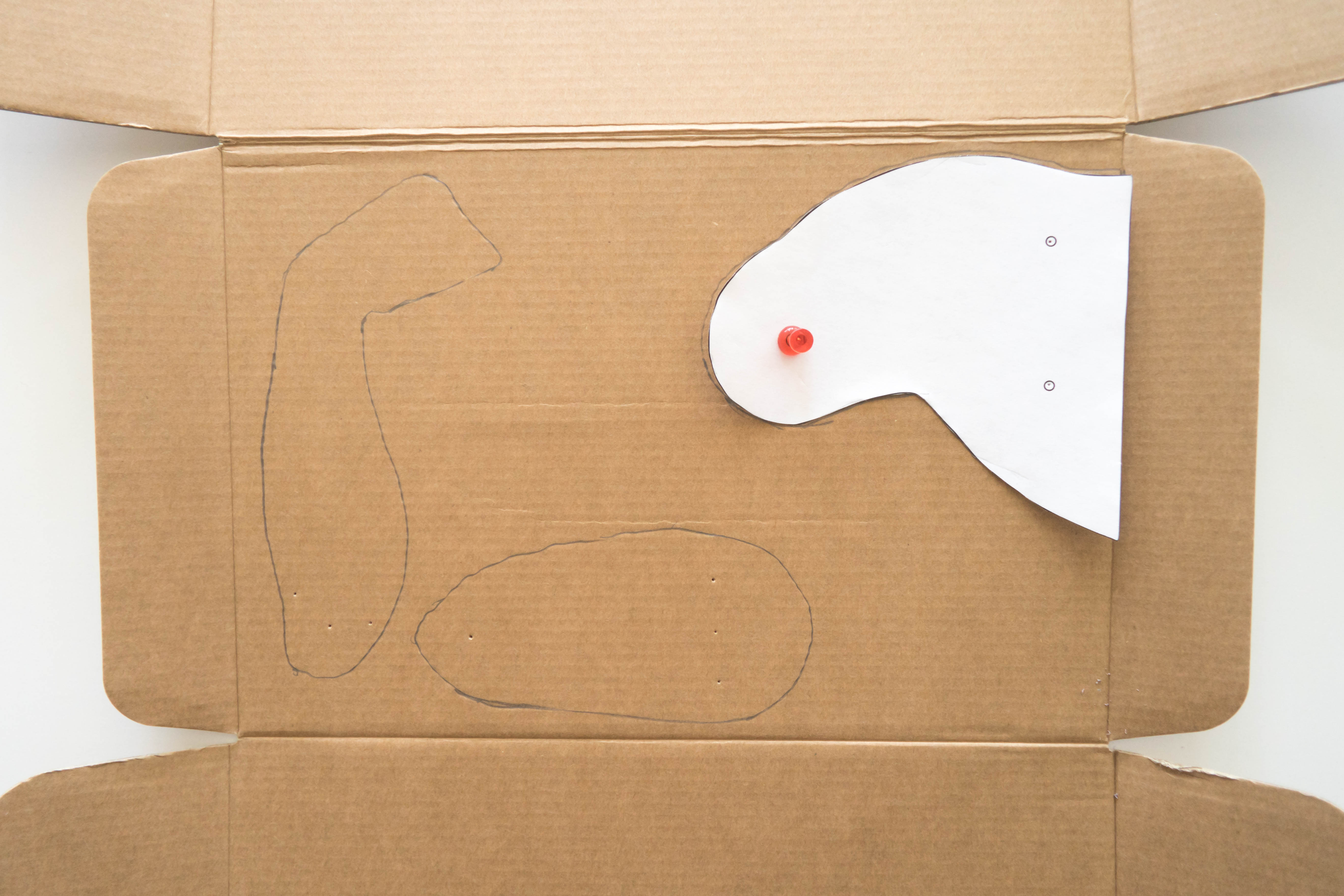
Tip
The holes are indicated by the small circles on the printable.
Step 4
Cut out the cardboard pieces.
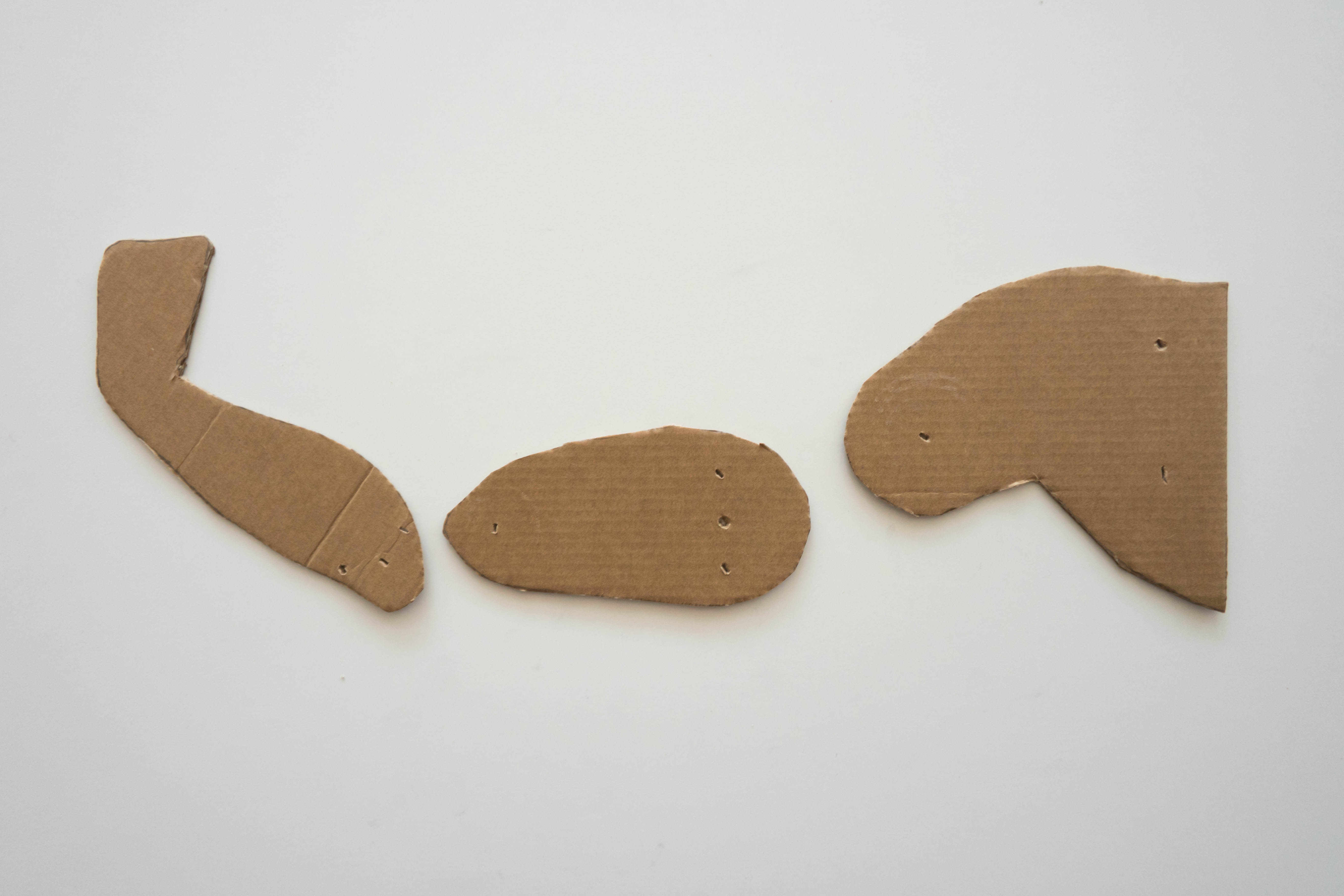
Step 5
Use double-sided tape to stick on the bicep and tricep pieces on the oval-shaped cardboard cutout. Then, widen each of the marked holes with a brad. The brads should easily fit into each hole.

Step 6
Fasten the bobbins to the cardboard pieces with the brads as pictured.
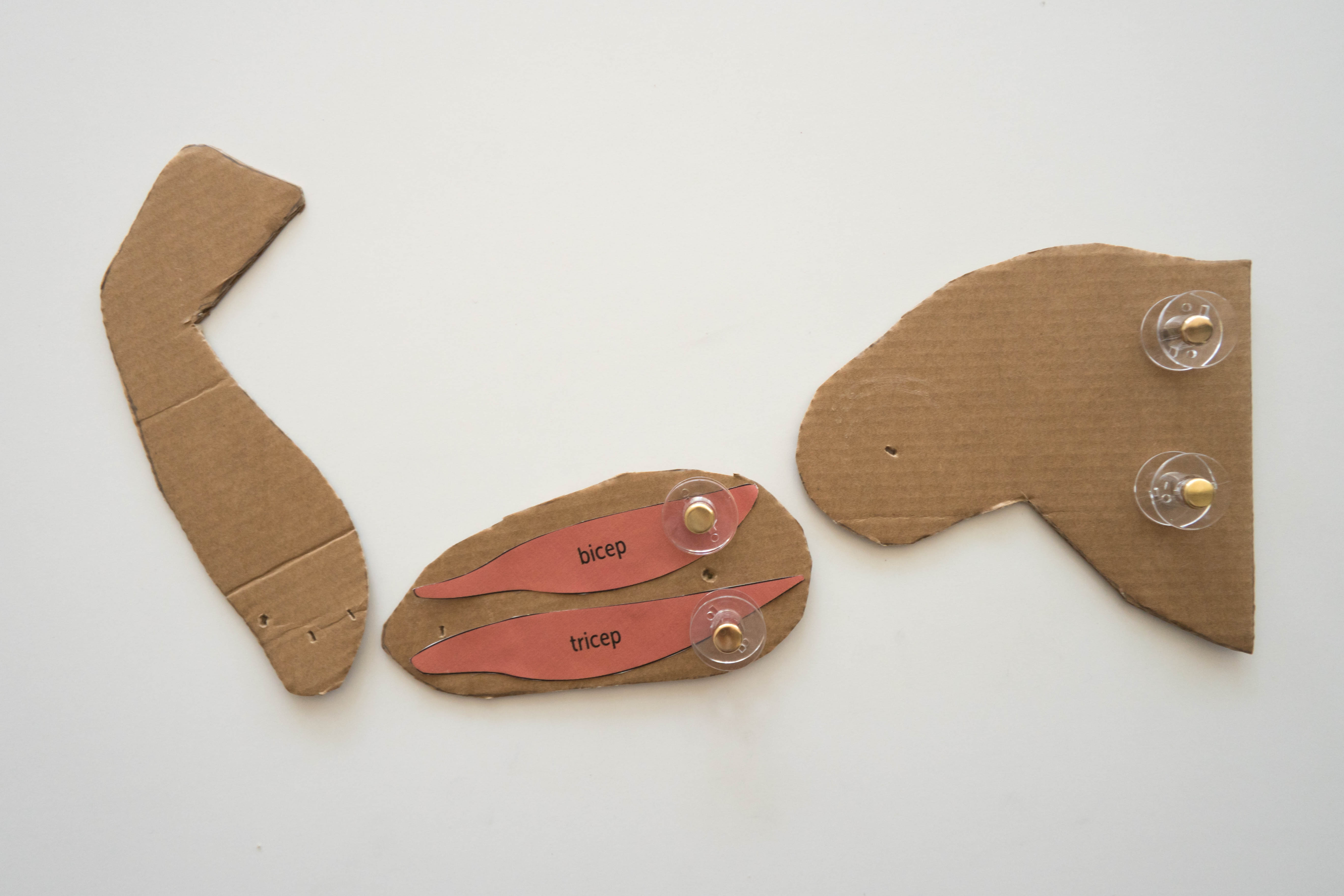
Step 7
Use another brad to connect the cardboard pieces (bicep and shoulder) as pictured.

Step 8
Fasten two brads to the cardboard piece (forearm) as pictured.
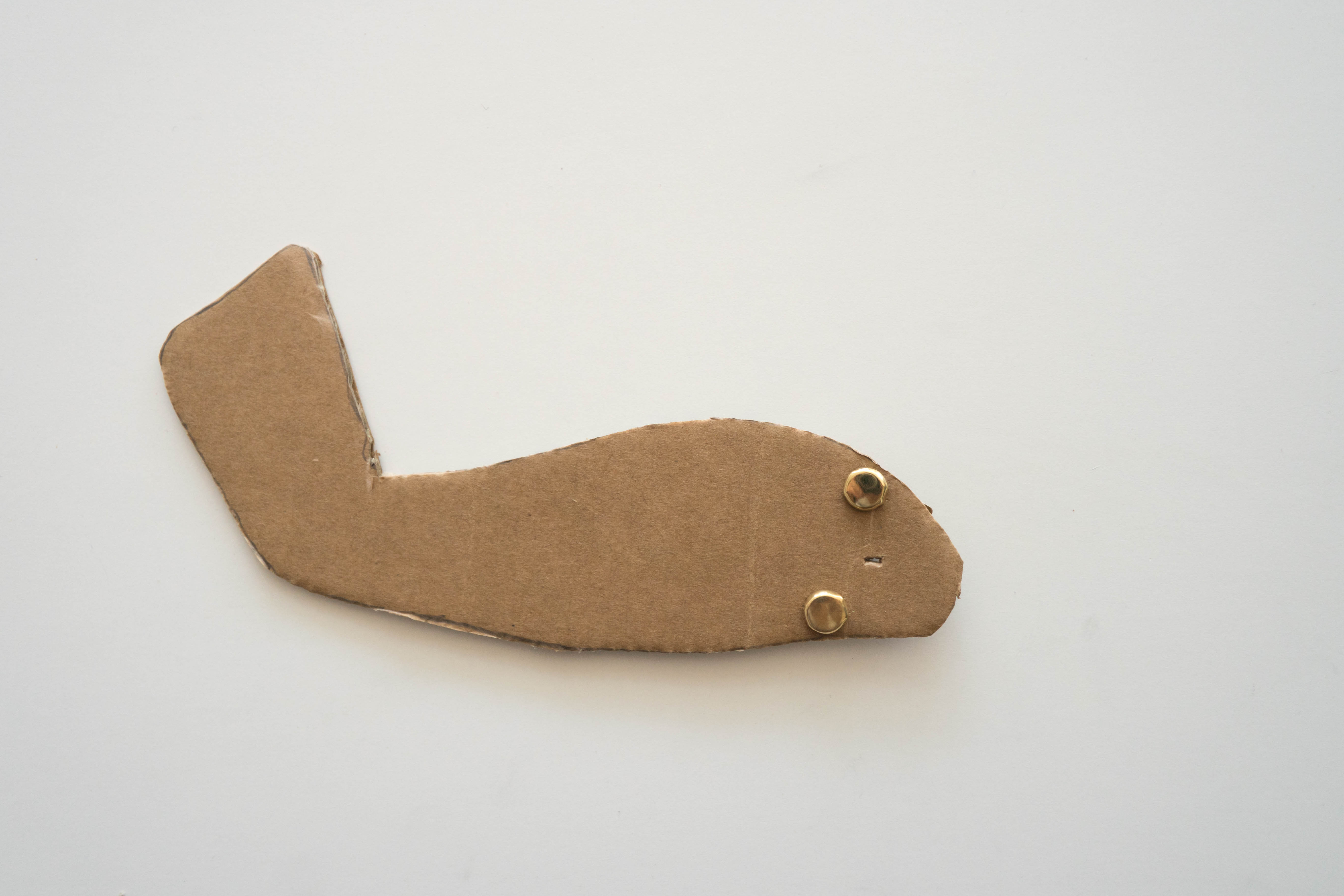
Step 9
Cut two pieces of string about 18” in length.

Step 10
Tie a loop-knot on one end of each string. Then, wrap the loop around the two brads on the forearm.

Step 11
Connect the cardboard pieces (forearm and bicep) as pictured.

Step 12
Thread the string onto the bobbins as follows: clockwise for the top string (bicep) and counterclockwise for the bottom string (tricep).
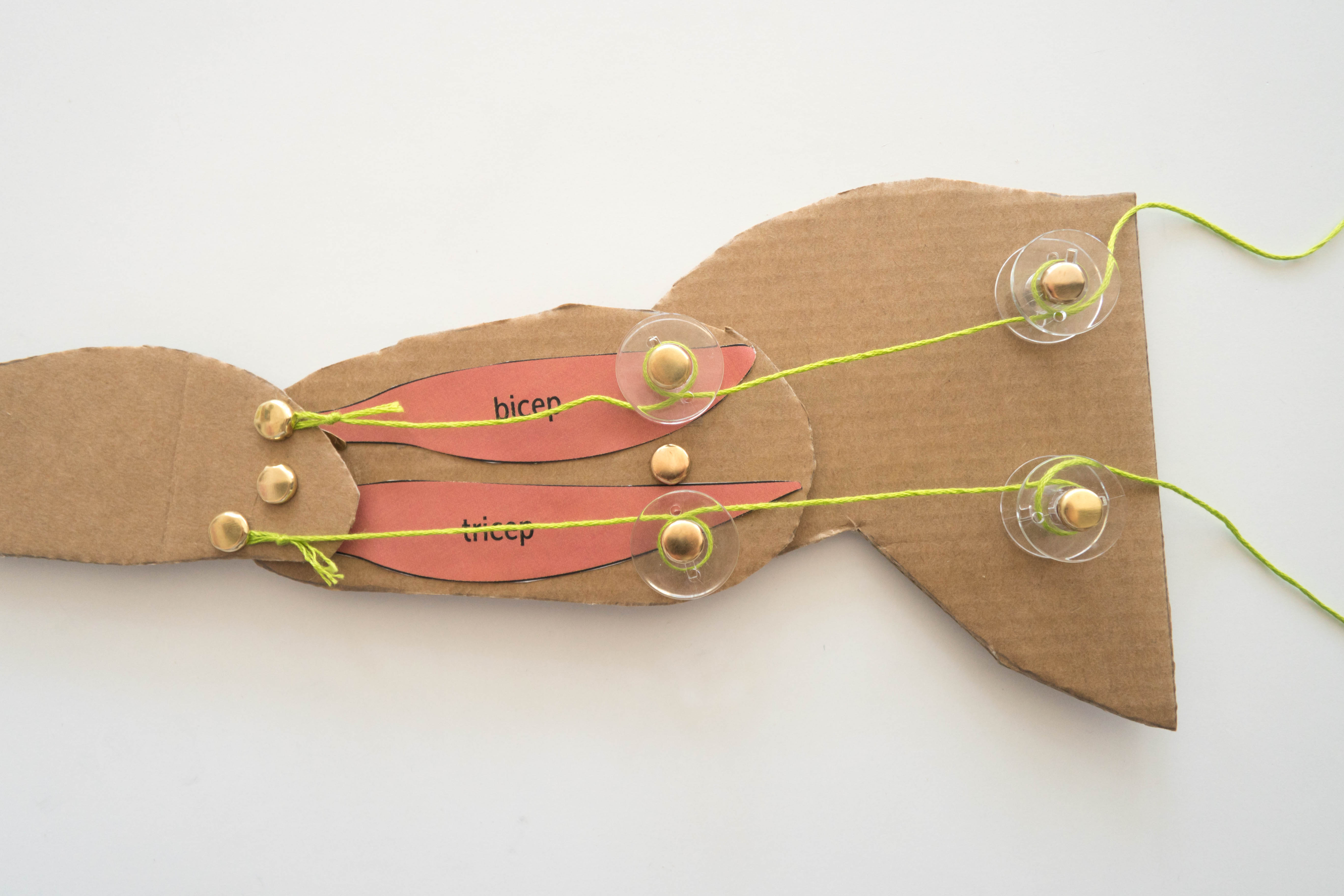
Step 13
Use the pushpin to make a set of holes just above and just below the bobbins. Then, thread the zip ties through the holes.

Step 14
Secure the cardboard arm to the bottle with the zip ties. Then, start experimenting! To move the arm up and contract the bicep muscle, pull on the top string. To move the arm down and contract the tricep muscle, pull on the bottom string. When you have gotten a hang of how the muscles work, see if you can pick something up!
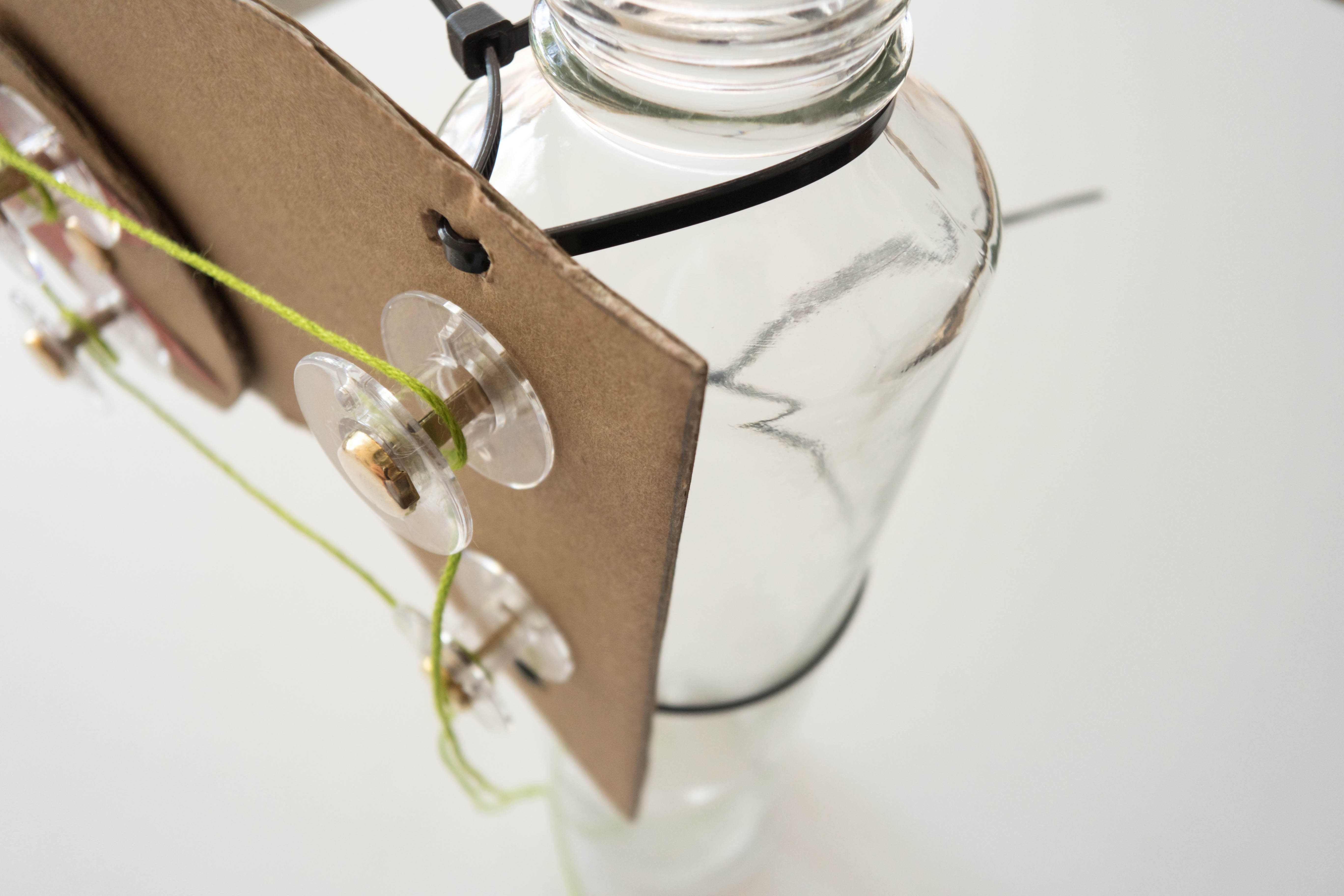
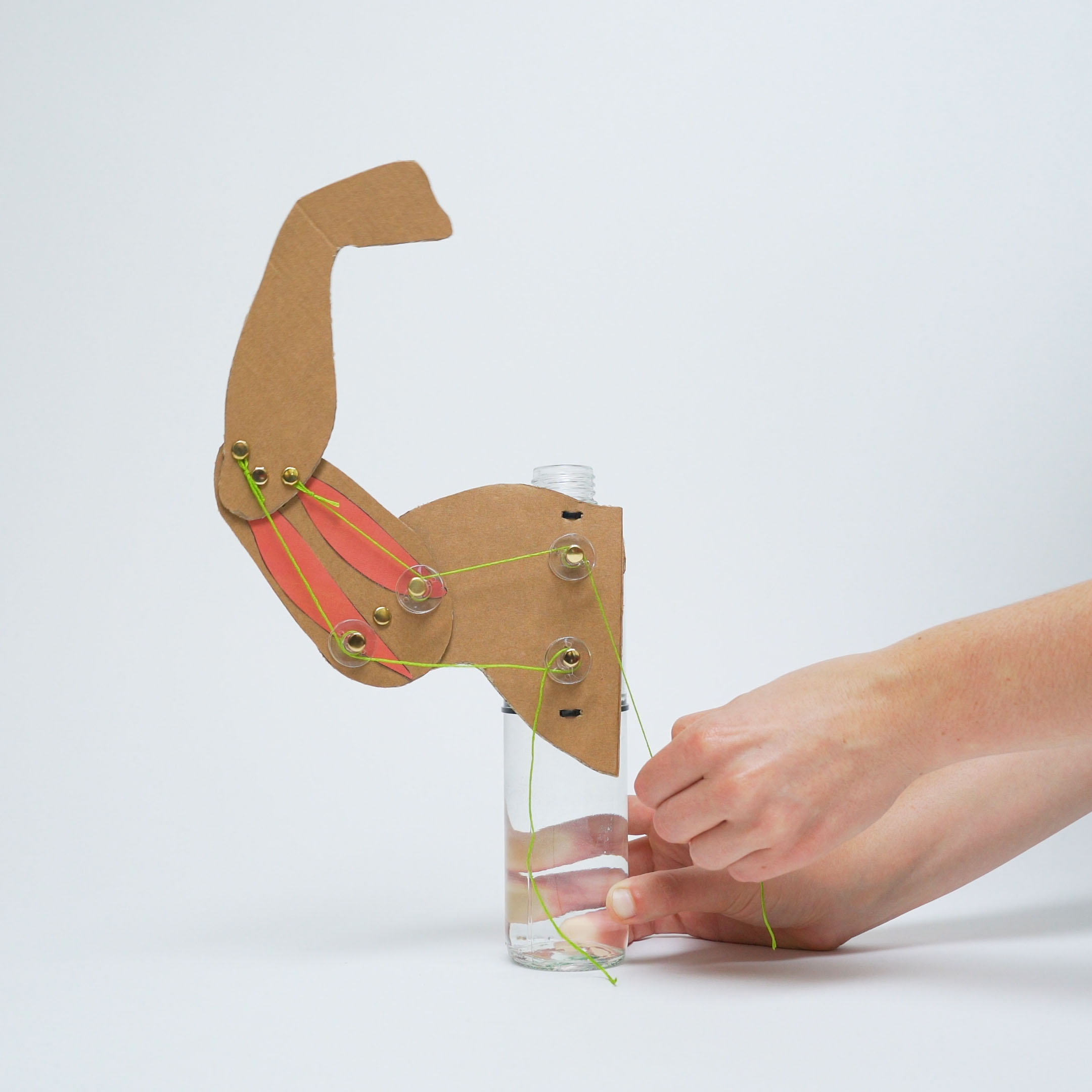
Learn more
There are way more muscles involved in moving your arm than just your biceps and triceps. Extensor and flexor muscles run through your forearm to move your wrist around. The deltoids on top of your shoulder, the pectoralis major on the front of your chest, and the latissimus dorsi on your back all help move your shoulder around. Your body has 650 muscles! Many muscle groups work in pairs like the bicep and tricep. Flexing one will move a limb one way, and flexing the other will move it back. Which other muscle pairs can you find? Some to check out: flexing your foot up and down, bending and unbending your knee, moving your leg away from your body and back, and bending forward and backward.
